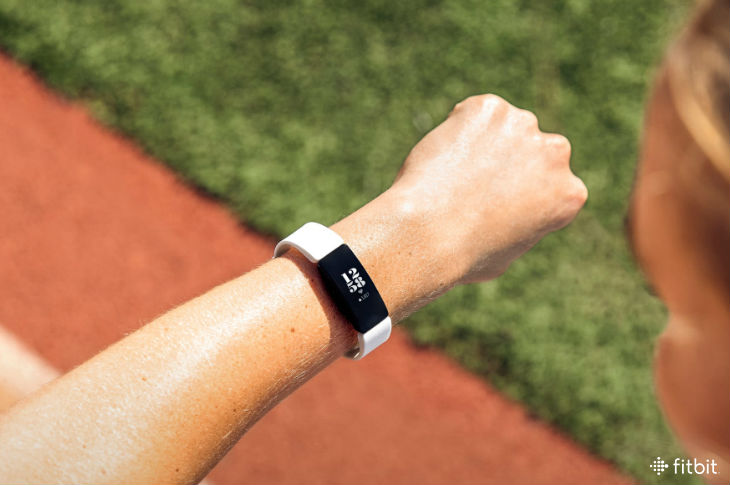 We often hear 10,000 steps as the golden number to strive for in a day. Why is it 10,000 steps and is it accurate for everyone?? The 10,000 steps concept was initially formulated in Japan in the lead-up to the 1964 Tokyo Olympics. However, there was no real research to support the target, instead it was a marketing strategy to sell pedometers. Australian physical activity guidelines recommended a minimum of 30 minutes of moderate intensity exercise each day. When we convert 30 minutes of activity to steps, it equals approximately 3,000 to 4,000 dedicated steps at a moderate pace depending on the person. In Australia, the average adult accumulates about 7,400 steps a day of incidental activity. Therefore, an additional 3,000 to 4,000 steps undertaken through dedicated walking will help you to reach the 10,000-step goal. Therefore for the average person, aiming for 10,000 steps a day means that we have had to undertake planned and dedicated exercise, and this is the most important part as this is where we get health benefits, therefore the 10,000 steps may be an accurate goal for the average person. Are pedometers or activity watches that track our steps a good tool to use to help us increase our physical activity? Yes they are. Anything that can help motivate you to exercise, provide accountability and track your progress is worthwhile trying. Studies that have looked at the use of activity watches for people specifically trying to improve their health has shown that they have helped to reduce weight and blood pressure when used to help people reach their goal. Should the 10,000 steps be the goal for everyone, or are there variations for different people? It definitely needs to be individual. Some people, for instance older people, people with chronic conditions and office workers will accumulate less incidental activity steps throughout the day and would not meet the average 7,400 steps, and others for example kids, athletes and people who are working on their feet all day will accumulate many more incidental activity steps throughout the day without undertaking any planned exercise. What is important, is attempting to add 3-4,000 steps to your day through dedicated exercise. This could be in 1,000 step or 10 minute exercise chunks. Research tells us that physical fitness is a better indicator of health, than just being active alone. This is why the dedicated exercise component of your step goal is really important. Alternatively, you may also get your 30 minutes of planned exercise in an alternative way that does not involve stepping such as swimming or cycling, so you will still receive the health benefits of exercise and fitness without increasing your step count. If this is you, your step goal might simply be to increase your incidental step count up to around 6-7,000/day. Initially back in the 60s when pedometers were first developed there was no research regarding the magic 10,000 steps. Is there research now? Yes, research recently has shown that people taking 10,000-steps or more a day have a 46% lower risk of early death. Other studies have also shown that people who took more than 5,000 steps a day had a much lower risk of heart disease and stroke than those who took less than 5,000 steps. And, each 1,000-step increase per day reduced the risk of dying prematurely of any cause by 6%. Key Points:
Lisa Parkinson Accredited Exercise Physiologist & Credentialed Diabetes Educator
0 Comments
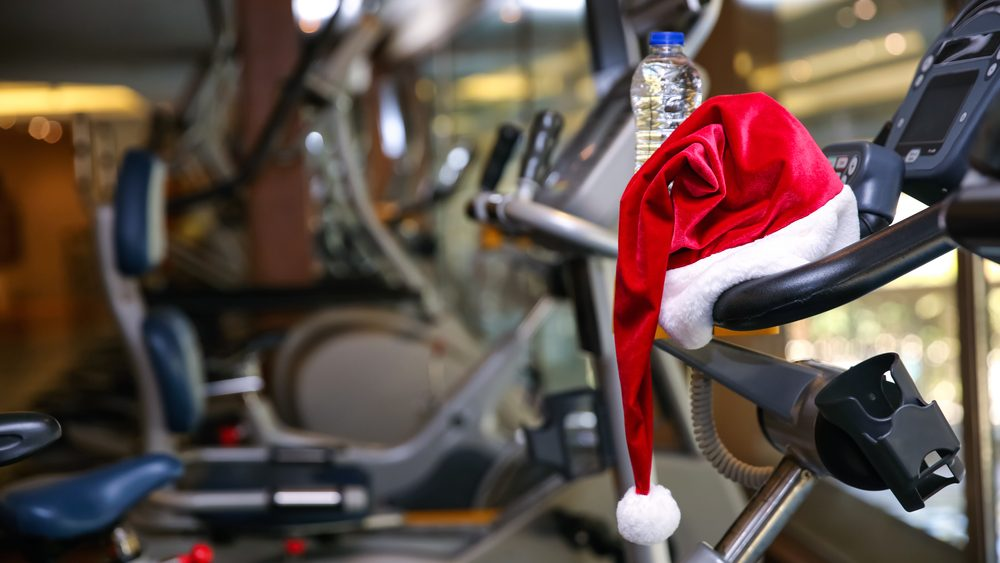 1. Be a morning person As they say the early bird catches the worm, and with everything being so busy in and around Christmas with Christmas shopping, food preparation for the big day, and the 5pm drinks or end of year celebration dinners, these can all get in the way of you exercising. With the massive to do list, the day just gets away from us. So, the best thing to do is to get up, get it done, and then get on with the rest of your day, knowing that you have ticked exercise off of your daily list. 2. Shop with your feet Some partners might not be keen on this, but a full day of shopping can accumulate some serious steps, and as we know walking is good for our health. So ditch the online shopping, although it’s probably too late for that anyway, and get out there and research on your feet for those last minute gifts. 3. Reduce prolonged sitting at work Many people are trying to wrap up end of year work, or cramming in extra work before heading off for their Christmas break, but this can mean a lot of sitting time. Some tips to try and reduce this sitting time are to park further away from your work, take the stairs where possible, take a walk at lunchtime or even squeeze in a mini-desk-workout. It’s surprising what a few squats every hour can do for your health and your quads! 4. Get more bang for your buck and up the intensity Again, your time is precious at this time of year with so much to do, so aim to get more bang from your buck with your workouts by undertaking high intensity training. You can get away with doing almost half as much exercise time, if you are exercising in the high intensity zone of about 85-95% of your maximum heart rate during training. High Intensity Interval Training (HIIT) also triggers Excess Post-Exercise Oxygen Consumption which is an after exercise calorie burn. For this reason it’s much more effective at burning calories than your steady state or regular moderate intensity aerobic exercise. 5. Phone a friend Do you have family staying with you, or have friends on holidays at the same time as you? Rather than only catching up over a drink or two, set a date for the morning to get exercising. It might be a hit of tennis, golf or just a long walk. But what an excellent way to be active and catch up on everything from the past year at the same time. Try and make it a holiday routine by undertaking it daily. And by having the accountability of a friend, you are more likely to stick to this routine, and it can be more fun when exercising with others. Lisa Parkinson Accredited Exercise Physiologist & Credentialed Diabetes Educator  Do you still have presents to buy this Christmas for your family and friends and unsure what to get them? Why not get them something that inspires them to move and improve their health in 2021. We also have gift vouchers available at Optimum Exercise Physiology that your loved one could use for individual or group sessions, or to buy exercise equipment. Christmas Present ideas: Water Bottle - how cool, 'literally’ are the water bottles these days. You can buy glass, stainless steel, or BPA free water bottles, in a range of colours, designs, and sizes. Some will even stay cold for up to 24 hours! Use them to take to work to keep your fluids up, or to the gym, tennis court or walking trail. Headphones - who doesn’t like a bit of music, podcast or book to keep you going through your workout or walk. You can get in ear, on ear and even wireless headphones for as little as $19, or go all out and find the apple airpods on sale for under $200! Great for keeping you motivated, or passing the time quickly (whichever you prefer 😉 ) Bluetooth speaker - keeping on the music theme, get your speakers pumping when working out, indoors or outdoors. Activity Tracker - these guys can also cost as little, or as much as you want, and can do as little or as much as you want! A top of the range Garmin watch has GPS, oxygen saturation level and heart rate monitoring on your wrist, altitude, and special ops functions that can set you back over $1500! But you can also buy something that will track your steps for as little as $150, and if you check out ebay or Gumtree, pick up one second hand for much less! Activity trackers have been shown by the research to help keep you accountable,and can assist in providing motivation to move more. Exercise Mat – these are not just for the yoga and pilates enthusiasts. They’re great for home workouts too. Gym Bag – Have this baby packed and ready to go in the morning or after work, so that there is no excuse not to hit the gym, pool or park. Gym Towel - One of the essential items in your gym bag. Much better than using your t-shirt to wipe the sweat off during a big workout. Look for a microfibre towel as they are very absorbent, light and dry quickly. Socks - this may seem strange to some, but exercising in crusty old socks is not fun 😋. And what a great stocking filler! Help your loved one start off their new year's resolutions in nice soft, comfy (matching) socks. If you’re new to socks yourself, check out sports stores for specific sports and running socks if that is what your loved one is in to, but even Bonds socks from Woolies are a great start. Sports apparel - looking good, can make you feel good and help motivate you to get out there. Our local sports store, target and a couple of our local boutiques all stock exercise apparel. If you're not sure of your loved ones size, purchase a voucher to help support our local businesses. Smartphone strap/holder - need to go mobile with your music, or need to be contactable by phone. Lots of versions available from arm bands to waist bags. Much better than a sweaty phone down your sports bra! Or, there are now many versions of tights that have a phone pocket in them. Foam Roller - Lower cost versions available from department stores, or grab them from your sports store or Exercise Physiologist. Great for recovery to massage the muscles, but also useful for performing exercises and stretching. Bath Salts – Say thanks to your muscles for all the hard work they do and relax them in a nice bath of salts. Scented Candle – What goes better with a bath than a nice scented candle to also help you relax. Ahhhhhh. Happy shopping and Merry Christmas from the team at Optimum Exercise Physiology. 🎄 Lisa Parkinson Senior Exercise Physiologist & Diabetes Educator. 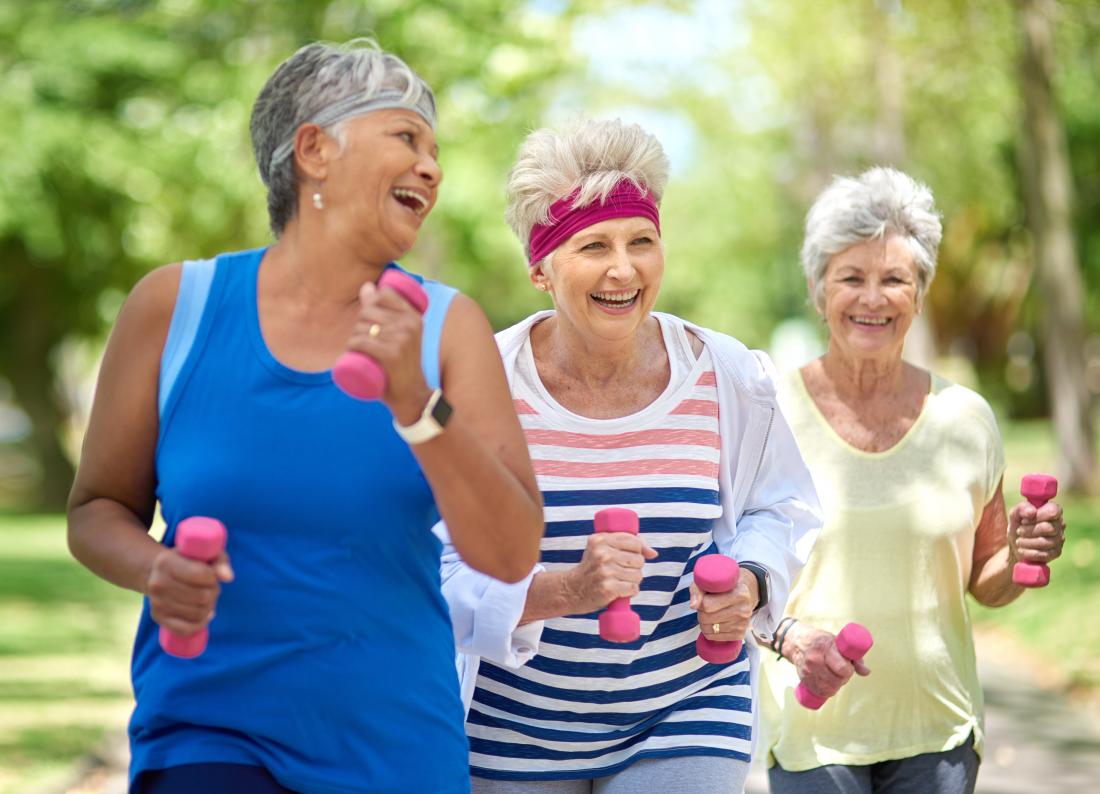 10 Top Tips for Exercising as you get older Exercise and Physical activity is not just for the young, but important for any age. 1. Consult with your doctor first Before starting an exercise program or increasing the intensity of your exercise program it is important to visit your GP and have a check of your blood pressure, cholesterol and heart health to ensure you are in a healthy condition to embark on a new exercise program. They can also refer you to the best possible person to support you – an Exercise Physiologist. 2. Reduce Alcohol As we age our body can react differently to alcohol. By reducing your alcohol you are able to reduce the risk of long term health issues such as cancer and heart issues, and it can also help to reduce your overall energy intake, helping you to lose weight. 3. Find what motivates you Find something that resonates with how exercise will help you, such as improving your golf game, being able to run around with and after the grandkids, or maybe it might be helping you to get down a little bit better to release that winning bowl. Whatever it is, use that as motivation, and in the process you will be improving your overall health and living longer! 4. Weight Training is not just for the young! Weight training as an essential exercise for every age and you don’t need any equipment as you can use your bodyweight for exercises like squats, push-ups, or step ups. These will all help to increase muscle tone, maintain strength and help to maintain a healthy body weight. Weight training can also help to reduce the risk of injury, falls and fatigue. 5. Get Social! Exercising with friends can be fun! Not only will you feel better from exercising, but you are more likely to keep it going. Even exercising with a buddy can help keep you accountable ensuring you both get your body moving and heart pumping. 6. Hit the water! Hydrotherapy is a type of exercise therapy done in a heated pool. You can undertake it by yourself by doing a walking or resistance program, or join an aquafit class. The benefit of heated pools is that gentle, controlled movements in warm water allows people to steadily progress their range of movement, and the buoyancy means that your weight is partly supported so great for people with lower limb and back conditions.. 7. Balance is a key component!: As part of your overall exercise program it is important to challenge your balance. This helps to enhance your overall awareness, coordination, maintain muscle activity and tone, and help to prevent falls which can result in injuries, and unfortunately are very common as we age. 8. Try new things There is no one size fits all exercise for everyone. There’s a wide selection of exercise or physical activity you can undertake from swimming, line dancing, bowls, walking soccer, walking the dog, the list goes on! The trick is finding something you enjoy and that you will stick to. 9. Monitor your intensity Exercise is a great way to keep your heart happy and healthy and it’s a good idea to pay attention to your heart rate during exercise, but there are some cardiac medications which alter our heart rate response to exercise, so another way to monitor our intensity is just by how we feel and the talk test. If you can sing, it’s light intensity, if you can’t sing, but can talk constantly, it's moderate intensity, if you’re puffing and struggling to talk, it's high intensity. Work at the intensity that’s right for you. 10. Recovery is important People find that their body does not recover quite as quickly as it once did so it’s important to take it easy and to allow yourself some recovery time. When we exercise, our body undergoes change to adapt to the stress that we place on it. This can result in some muscle soreness (known as delayed onset muscle soreness), fatigue and reduced muscle strength and power, so allowing your body to rest and recovery, including getting adequate sleep and hydrating is very important. Lisa Parkinson Accredited Exercise Physiologist 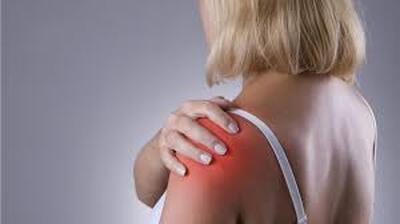 Have you ever been told that you’ve had a rotator cuff injury or perhaps had a tightness or pain in the shoulder? We are going to break down exactly what the rotator cuff is and what role it plays in keeping our shoulder functional and pain free. What is the Rotator Cuff? The rotator cuff is a group of muscles that help keep your upper arm bone (the Humerus) secure within the shoulder socket. There are 4 muscles that do this job for us and each play its own important role, Supraspinatus, Infraspinatus, Subscapularis and Teres Minor.
Why are injuries common to the rotator cuff? As we use our shoulder so frequently during day to day movements it can often suffer from some wear and tear. This wear and tear is increased if you have a job that requires frequent movement of the arm in a repetitive motion, play sports that require a high degree of shoulder strength or are constantly lifting heavy loads or working overhead for long periods of time. As the shoulder can move through such a large range of movement (forward, backwards, side to side and overhead) these 4 muscles have a large role to play in the stability of the shoulder joint. When one of these muscles becomes injured or fatigued it can place higher stress on one of the remaining three, increasing the likelihood of developing further injuries. Most common injuries
By Aleisha Michael Accredited Exercise Physiologist |
AuthorSLisa Parkinson Archives
July 2024
Categories
All
|

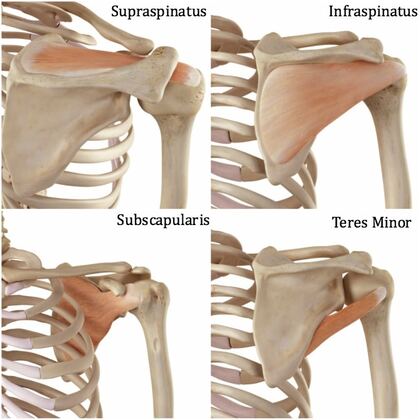
 RSS Feed
RSS Feed